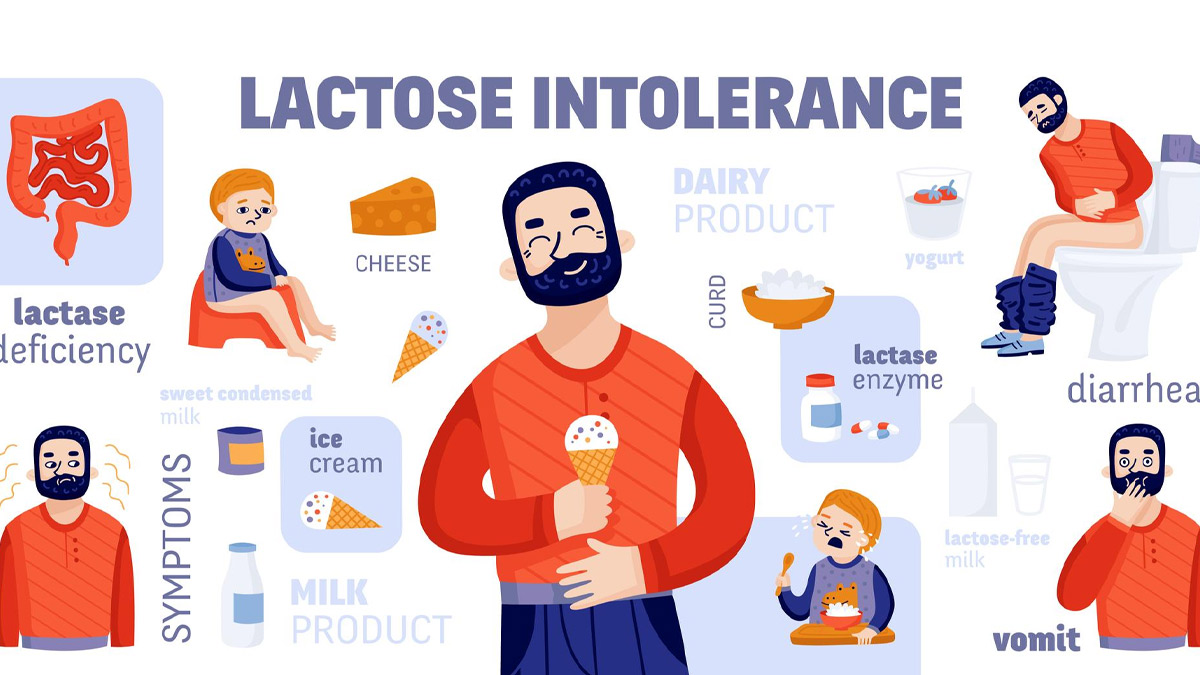
Lactose intolerance, a condition affecting a significant portion of the population, presents a challenge in enjoying dairy products due to difficulties in digesting lactose, a sugar found in milk and various dairy items. The root cause lies in the deficiency or absence of lactase, an enzyme vital for lactose digestion, which is predominantly produced in the cells lining the small intestine. This deficiency can stem from both genetic and non-genetic factors.
Table of Content:-
We spoke to our expert Dr Shweta Jaiswal, Senior Dietician - Sharda Hospital to shed some light on why only a few individuals are lactose intolerant and what are its management strategies. Here is what she shared with us.
Congenital Lactase Deficiency
In some cases, such as congenital lactase deficiency or congenital alactasia, infants face a critical inability to break down lactose from breast milk or formula. This condition manifests severely with symptoms like persistent diarrhoea. Prompt attention and action are crucial in such cases to avoid dehydration and weight loss, often necessitating the use of lactose-free infant formulas.
Lactose Intolerance in Adulthood
Beyond infancy, lactose intolerance can also develop due to diminished lactase production. This condition, termed lactase nonpersistence, commonly surfaces in adulthood. Individuals experiencing lactose intolerance may encounter distressing symptoms like abdominal pain, bloating, flatulence, nausea, and diarrhoea within 30 minutes to two hours post-consumption of lactose-containing dairy products.

Also Read: Optimising Protein Intake: Expert Shares Tips on Healthy Food Combination
Management Strategies for Lactose Intolerance
While lactose intolerance may not be preventable or curable, effective management strategies exist to alleviate symptoms and enable individuals to continue enjoying dairy products:
1. Gradual Introduction
Introduce small amounts of dairy into your diet progressively to gauge your body's tolerance. This method allows your system to adapt gradually and may reduce the severity of symptoms.
2. Combination with Other Foods
Pairing dairy products with other foods can aid digestion. For instance, consuming milk with cereal or incorporating dairy into meals alongside other food items may ease discomfort.

Also Read: Oestrogen Detoxification: Expert Shares A Comprehensive Guide to Hormone Balance and Wellness
3. Opt for Low-Lactose Options
Choose dairy products with lower lactose content, such as hard cheeses like cheddar, swiss, or parmesan. Additionally, cultured milk products like yoghurt typically contain less lactose and are better tolerated by some individuals.
4. Lactose-Reduced or Lactose-Free Alternatives
Explore lactose-reduced or lactose-free milk options available in the market. Alternatively, consider dairy milk alternatives like almond, soy, or flaxseed milk for beverages or cereal. These alternatives offer a lactose-free option without compromising nutritional value.
5. Label Reading
Prioritise reading nutrition labels to identify dairy products and ascertain their lactose content. Familiarising yourself with ingredients can help you make informed choices and avoid triggering symptoms.
By adopting these management tips, individuals with lactose intolerance can navigate their dietary choices effectively, allowing them to enjoy dairy products while minimising discomfort. It's essential to tailor these strategies to suit individual tolerances and preferences, finding the balance that works best for you.
A Final Word
Lactose intolerance poses challenges in consuming dairy products due to difficulties in digesting lactose, primarily stemming from insufficient lactase production. However, with appropriate management strategies such as gradual introduction, pairing with other foods, opting for low-lactose alternatives, and label reading, individuals can mitigate symptoms and continue incorporating dairy into their diets. By understanding the causes and implementing effective management techniques, individuals can maintain a balanced and enjoyable diet despite lactose intolerance.
Also watch this video
How we keep this article up to date:
We work with experts and keep a close eye on the latest in health and wellness. Whenever there is a new research or helpful information, we update our articles with accurate and useful advice.
Current Version